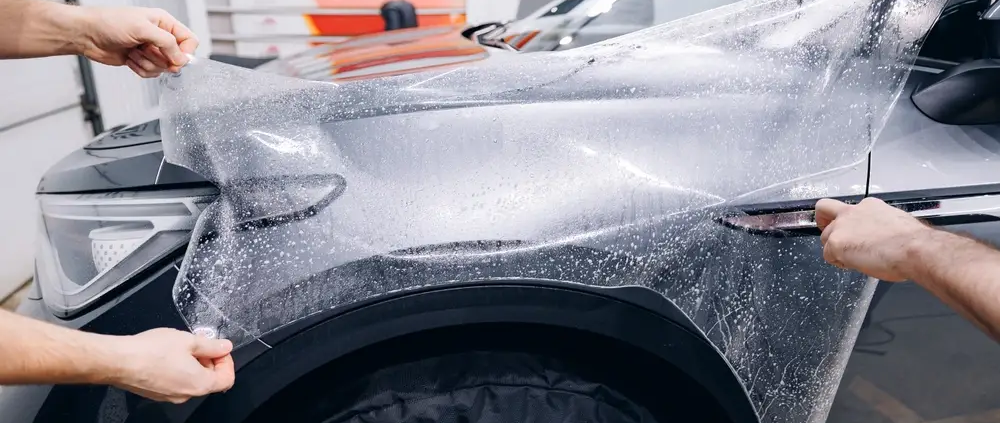Window Tint: Your Complete Guide to Automotive Privacy and Protection
Window tinting has become one of the most popular automotive modifications, offering a perfect blend of style, privacy, and practical benefits. Whether you’re looking to reduce heat, block UV rays, or simply enhance your vehicle’s appearance, window tint provides an affordable solution that delivers immediate results.
Understanding the basics of window tinting helps you make informed decisions about which type suits your needs, what legal requirements apply in your area, and how to maintain your investment for years to come.
What Is Window Tint?
Window tint is a thin film applied to the interior surface of your vehicle’s glass. Made from polyester materials, these films contain dyes, metals, or ceramic particles that control light transmission and heat rejection. The tint level is measured as Visible Light Transmission (VLT), with lower percentages indicating darker tint.
Most states regulate how dark your window tint can be, particularly on front side windows and windshields. These laws exist for safety reasons, ensuring drivers maintain adequate visibility while operating their vehicles.
Types of Window Tint Films
Dyed Window Tint
The most affordable option, dyed tint uses multiple dye layers to absorb solar energy. While budget-friendly, it offers moderate heat rejection and may fade over time.
Metalized Window Tint
Incorporating metallic particles, metalized tint provides excellent heat rejection and durability. However, it can interfere with electronic devices like GPS and cell phone signals.
Carbon Window Tint
Carbon particles give this tint its distinctive matte finish while delivering superior heat rejection without signal interference. It’s more expensive than dyed options but offers better longevity.
Ceramic Window Tint
The premium choice, ceramic tint uses non-metallic ceramic particles for maximum heat rejection and clarity. It blocks infrared rays effectively while maintaining crystal-clear visibility and allowing electronic signals to pass through.
Key Benefits of Window Tinting
UV Protection
Quality window tint blocks up to 99% of harmful UV rays, protecting your skin during long drives and preventing interior fading, cracking, and deterioration.
Heat Reduction
Window tint can reduce interior temperatures by 35-45%, improving comfort and reducing air conditioning usage, which can improve fuel efficiency.
Glare Reduction
Tinted windows significantly reduce eye strain from bright sunlight, headlights, and reflective surfaces, making driving safer and more comfortable.
Privacy and Security
Darker tints provide privacy for passengers and belongings while making it harder for potential thieves to see valuables inside your vehicle.
Shatter Protection
Window tint film helps hold glass fragments together if windows break, providing an additional safety benefit in accidents.
Choosing the Right Tint Level
Selecting appropriate tint darkness depends on your priorities and local regulations. Common VLT percentages include:
- 70% VLT: Light tint providing UV protection with minimal appearance change
- 50% VLT: Moderate tint balancing protection and visibility
- 35% VLT: Popular choice offering good privacy and heat rejection
- 20% VLT: Dark tint providing maximum privacy and protection
- 5% VLT: “Limo tint” offering complete privacy but limited visibility
Check your local laws before deciding, as regulations vary significantly by state and can result in fines if violated.
Professional Installation vs. DIY
While DIY window tint kits exist, professional installation typically delivers superior results. Experienced installers have the tools, techniques, and templates needed for precise application without bubbles, creases, or uneven edges.
Professional installation also comes with warranties covering both materials and workmanship, protecting your investment if issues arise.
Maintaining Your Window Tint
Proper care extends your window tint’s lifespan and appearance. Wait at least a week before cleaning newly installed tint to allow complete curing. Use ammonia-free cleaners and soft cloths to avoid scratching or damaging the film.
Avoid using sharp objects near tinted windows, and be gentle when removing ice or snow during winter months.
Making Your Decision
Window tint offers numerous benefits that enhance both comfort and vehicle appearance. Consider your specific needs, local regulations, and budget when choosing tint type and darkness level.
Research reputable installers in your area, compare warranties, and don’t hesitate to ask questions about their experience and materials. Quality installation makes all the difference in achieving the results you want from your window tint investment.



Leave a Reply
Want to join the discussion?Feel free to contribute!